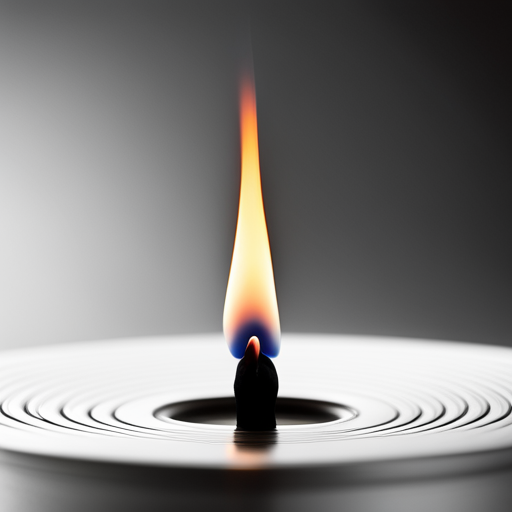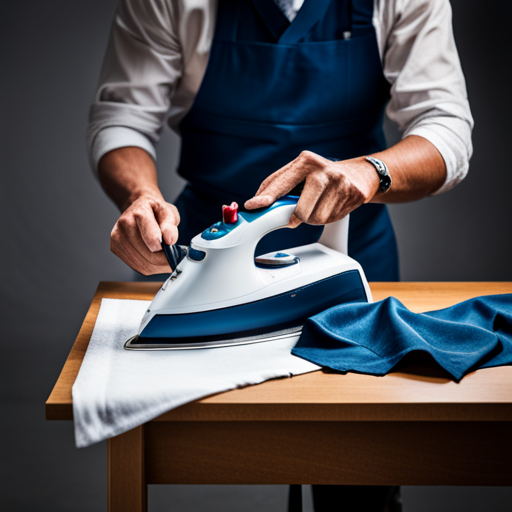To prevent wick curling, it is suggested to trim the wicks, choose non-curlable options, or use wicks with built-in cores. In this article, we will explore the science, factors, and techniques related to wick curling.
Key Takeaways
– Wick curling is influenced by factors such as the type of material used, the heat from the candle flame, and the structure of the wick.
– Different types of wicks, such as twisted wicks, wicks made from materials that naturally curl when heated, flat braid wicks, CD wicks, and RRD wicks, can all exhibit varying degrees of curling.
– Advantages of wicks that curl include being self-trimming, less likely to mushroom or clog, and made from natural materials without metal cores.
– To prevent wick curling, it is recommended to trim wicks to a 1/4 inch length, use non-curlable candle wicks, cut down existing wicks, use wicks with built-in cores, or choose larger wicks for longer burn time.
The Science Behind Wick Curling

https://www.youtube.com/watch?v=G-087s4GHSs
The science behind wick curling is still not fully understood, but it is believed to be influenced by factors such as the type of material used, the heat from the candle flame, and the structure of the wick itself.
When a candle is lit, the heat from the flame causes the wax to melt and be drawn up through the wick. As the liquid wax travels up the wick, it evaporates and turns into a gas, which then ignites to create the flame.
The structure of the wick plays a role in how the flame burns and how the wick curls. It is thought that the curling of the wick occurs due to the differential heating and evaporation of the wax along the length of the wick.
Further research is needed to fully understand the intricacies of wick curling.
Factors That Influence Wick Curling

Factors such as the type of wick used and the heat applied can influence how much a candle wick will curl. Different types of wicks, such as twisted wicks, wicks made from materials that naturally curl when heated, flat braid wicks, CD wicks, and RRD wicks, can all exhibit varying degrees of curling.
Wicks that curl have advantages such as being self-trimming, less likely to mushroom or clog, and made from natural materials without metal cores. However, there are also disadvantages to wicks that curl, including the risk of the wick getting lost in the wax, uneven flame and heat distribution, potential candle explosions, and difficulty in lighting the candle from either the top or bottom.
To prevent wick curling, it is recommended to trim wicks to a 1/4 inch length, use non-curlable candle wicks, cut down existing wicks, use wicks with built-in cores, or choose larger wicks for longer burn time.
Pros and Cons of Curling Wicks

One advantage of wicks that naturally curl when heated is that they are less likely to clog. When the wick curls, it creates space for the wax to flow through, preventing any blockages that could hinder the burning process. This is particularly beneficial for candles that are made from natural materials and do not have any metal cores. Additionally, the curling action helps in self-trimming the wick, reducing the need for constant maintenance. However, there are also some disadvantages to consider. The uneven flame and heat distribution of curling wicks can result in an inconsistent burn. There is also a risk of the wick getting lost in the wax, which can lead to potential candle explosions. Lighting these wicks from the top or bottom can also be challenging.
| Advantages of Curling Wicks | Disadvantages of Curling Wicks |
|---|---|
| Less likely to clog | Uneven flame |
| Self-trimming | Uneven heat distribution |
| Made from natural materials | Potential candle explosion |
Types of Candle Wicks That Curl

Using twisted, flat braid, CD, and RRD wicks are some of the ways to achieve a curling effect in candle flames. These types of wicks add character and charm to the burning candle, creating an enchanting ambiance.
The curling flames dance and flicker, captivating the audience with their mesmerizing movements. As the flames curl, they create a sense of warmth and comfort, evoking a cozy and intimate atmosphere. The gentle curves of the flames bring a touch of elegance and sophistication to any space.
Curling wicks have the advantage of being self-trimming and less likely to mushroom or clog. However, they can also pose challenges, such as uneven flame and heat distribution or the risk of candle explosion. Despite these drawbacks, the allure of curling wicks remains irresistible.
Troubleshooting Curling Wicks

To troubleshoot the issue of wicks that curl, a candle maker can experiment with different trimming techniques and explore alternative types of non-curlable wicks.
One possible solution is to trim the wicks to a length of 1/4 inch. This helps to prevent excessive curling and promotes a more even burn.
Additionally, using non-curlable candle wicks can be effective in preventing wick curling. These wicks are specifically designed to resist curling, resulting in a more stable flame.
Another option is to cut down existing wicks to remove any curled portions. This can help to restore the wicks to their original shape and prevent further curling.
Lastly, using wicks with built-in cores or choosing larger wicks for longer burn time can also minimize wick curling.
Techniques to Prevent Wick Curling

After discussing the challenges of dealing with curling wicks, it’s time to explore techniques to prevent this frustrating issue. Implementing these strategies can help candle makers create candles with straight, even-burning wicks.
Here are some techniques to prevent wick curling:
1. Trim wicks to 1/4 inch length: Regularly trimming the wick to the recommended length helps maintain its stability and prevents curling.
2. Use non-curlable candle wicks: Opting for wicks specifically designed to resist curling can eliminate this problem altogether.
3. Cut down existing wicks: If you’re experiencing curling with your current wicks, carefully trimming them down may help prevent further curling.
4. Use wicks with built-in cores: Wicks that have built-in cores provide stability and reduce the chances of curling.
Exploring Alternatives to Curling Wicks

One effective method to prevent wick curling is by experimenting with different types of wick materials. By using alternative materials, candle makers can find wicks that are less prone to curling and provide a more consistent burn.
Flat braid wicks, CD wicks, and RRD wicks are common types of wicks that tend to curl. However, there are non-curlable wicks available that can be used as alternatives. These wicks are specifically designed to resist curling and provide a more stable flame.
Additionally, using wicks with built-in cores or choosing larger wicks for longer burn times can also help prevent wick curling. By exploring these alternatives, candle makers can create candles with a more even and reliable burn.
Can a Curled Candle Wick Affect the Burning Process Without a Wick?
When burning candles without wick, a curled wick can affect the burning process. It can cause uneven burning and create a smaller flame, leading to incomplete wax melting. This can ultimately result in wasted wax and reduced fragrance throw. It’s important to trim wicks regularly to ensure a clean and efficient burn.
Frequently Asked Questions
How Can I Fix a Candle With a Curled Wick?
To fix a candle with a curled wick, trim the wick to a 1/4 inch length. Alternatively, use non-curlable wicks, cut down existing wicks, or choose larger wicks for a longer burn time.
Can I Use a Non-Curlable Wick in Any Type of Candle?
Yes, a non-curlable wick can be used in any type of candle. It is designed to resist curling, providing a more even flame and heat distribution.
What Causes a Wick to Curl in the First Place?
A wick curls due to factors such as being made from materials that naturally curl when heated, being a twisted or flat braid wick, or using CD or RRD wicks. This can result in uneven flame and heat distribution.
Are There Any Safety Concerns With Using Candles That Have Curling Wicks?
There are safety concerns with using candles that have curling wicks. These include potential candle explosions, uneven flame, and uneven heat distribution. It may also be difficult to light them from the top or bottom.
Can I Use a Wick With a Built-In Core in Any Type of Candle?
Yes, a wick with a built-in core can be used in any type of candle. It provides stability and prevents the wick from curling, ensuring an even burn and reducing the risk of safety concerns.

